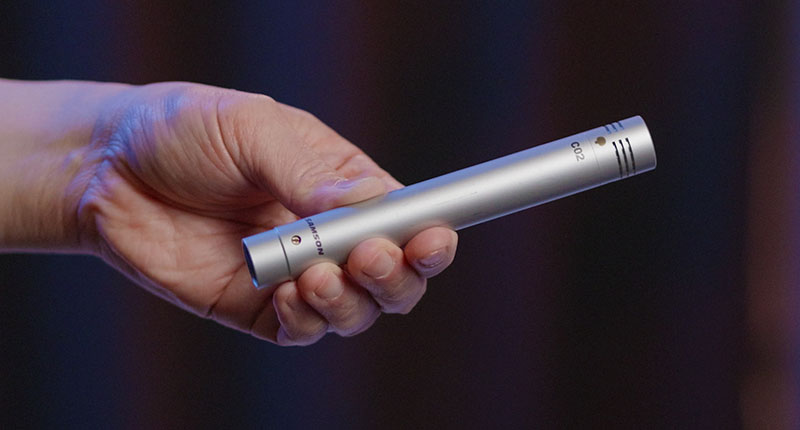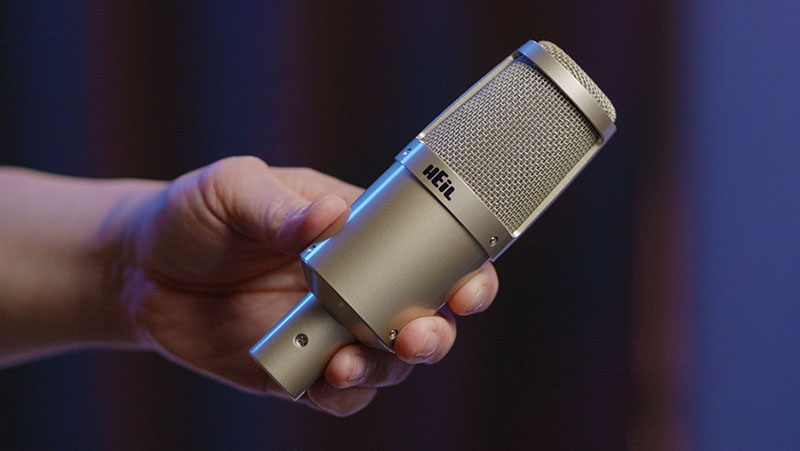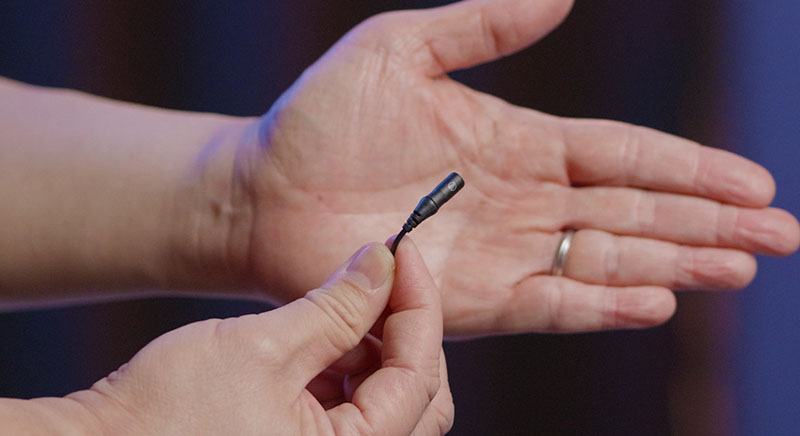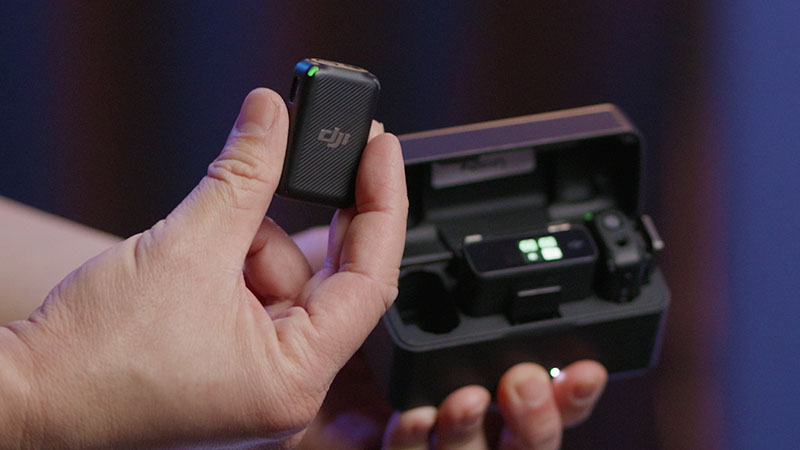A recent study by Google and YouTube found that 84% of viewers say they’d rather watch a video with clear audio and mediocre visuals than a beautifully shot video with bad sound.
So if you’re making videos, choosing the right microphone is one of the most important things you can do. But here’s the thing—there’s no single ‘best’ microphone. The right one depends entirely on how you plan to use it. A mic that’s perfect for one situation might be completely wrong for another.
Who is this for?
Before we dive in, I just want to mention—this isn’t a deep technical breakdown of microphones. Instead, this is a practical guide for video creators who just want better audio without getting lost in the details.
I’ll be comparing four broad categories of microphones based on how they’re actually used, so you can understand their strengths and weaknesses, and decide what works best for you. Also, this is not a sponsored post. I bought all this gear with my own money, and I’m not here to sell you anything. I will mention specific microphones, but these are just examples to represent each category—not recommendations for those exact models.
I’ve been doing corporate videos for well over a decade and the gear I use is simply what I could afford at the time—and importantly, gear that I felt would deliver the best value for the money I had to spend on them.
And honestly, with microphones, there’s a point of diminishing returns. Once you get past a few hundred dollars, I think you start paying more and more for only small incremental improvements in sound quality. Unless you’re working as an audio professional, I believe you don’t need to chase the most expensive mic to get great audio.
Let’s jump in and compare four types of microphones for video creators!
Overview of the 4 Microphone Types
There’s no single ‘best’ microphone—what matters is choosing the right one for how you plan to use it. So let’s break down four common types of microphones, how they work, and their pros and cons.

Condenser Microphones
Condenser microphones are known for detailed, high-fidelity sound, making them perfect for studio recordings, voiceovers, and filmmaking. This category includes small diaphragm condenser mics—sometimes called ‘pencil mics’—and shotgun microphones, which are widely used in video and film production.
One of their advantages is their high sensitivity gives a bit of working distance—meaning they can be placed just outside the camera frame, so you don’t see a microphone in your shot.
Setup & Considerations:
- Most condenser mics require 48 volts of electricity that is called ‘phantom power’ from an audio interface, mixer, or powered adapter. Usually only higher end mirrorless cameras can supply this power to a microphone via an XLR interface. If your camera doesn’t have this option, you’ll end up needing a separate audio recorder, and need to synchronize your video and audio during editing. Many pros say this is actually the right way to do it, but personally I like the ease of going directly into my camera so I use an XLR interface that can supply the required power to the microphone.
- Some condenser microphones can run on plug-in power from a camera’s mic input, however these microphones are usually inexpensive options that may be only marginally better than the camera’s built-in microphone. They usually have a weaker signal and more noise than higher quality options.
- Pro and prosumer condenser microphones are highly sensitive, so they pick up everything. That includes background noise, echo, and distant sounds, making them best suited for controlled environments. They can be challenging in noisy environments because you may very well pick up noise from the next room or traffic noise from outside.
- But condenser mics tend to give the most natural sound, where they pick up some of the environment, including room acoustics and ambient noise.
I personally use small diaphragm condenser microphones in my kitchen studio because they’re great for catching spoken instructions, as well as delicate sounds like knife work and pouring ingredients.
In the category of condenser microphones, there are also large diaphragm condenser microphones which are commonly used for music vocals or voiceover recordings in studio environments. These give highly detailed sound recordings, but I don’t think they work so well in many home or office studios where background noise could become a real problem.
In short, condenser mics and are:
- Best for studio recordings, filmmaking, music, and voiceovers in recording booths.
- The downside is that they are too sensitive for noisy environments.

Dynamic Microphones
Dynamic microphones are the podcaster microphones. They are rugged, simple to use, and don’t require external power. They are less sensitive than condenser microphones, so you need to be up close and speak into them directly. A benefit of that proximity is that your voice becomes much louder than the background noise, making them ideal for focusing on the voice of the presenter in situations like podcasting, live streaming, and broadcasting.
Setup & Considerations:
- Dynamic microphones typically come in XLR and USB versions—XLR versions are meant to plug into a mixing board or a camera with a suitable audio interface, but USB models are just plug-and-play to your computer.
- Unlike condenser microphones, they don’t need phantom power and are usually more rugged, making them good for location and stage work.
- A limitation of dynamic microphones is that they must be kept very close to your mouth for good sound. Move too far away, like even just a few inches away, and your voice drops off quickly. If you’re doing YouTube or corporate videos, this pretty much guarantees that the microphone will be in your shot, which is okay if you are going for that look. Hopefully you can position it so it doesn’t block the face of your speaker.
In short, dynamic microphones are:
- Best for podcasts, live streaming, and noisy environments where you want to focus on the voice of the speaker.
- Their downside is that the mic must be in your shot and close to your mouth.

Lavalier Microphones
Lavalier microphones, sometimes called lapel or lav mics, are small clip-on microphones that allow for hands-free recording. They’re often used for interviews, presentations, and on-camera speaking.
Setup & Considerations:
- A wired lavalier mic often plugs directly into a camera, recorder, or smartphone for a simple setup.
- A wireless lav mic provides freedom to move making them great for stage presentations because the microphone is always on the speaker even if they move around, but requires a transmitter and receiver setup.
- Even though they are actually really small condenser microphones, they usually don’t pick up the environment as much because of their proximity to the speaker’s mouth at all times.
- A clipped on lavalier microphone will often be visible in your shot, meaning that your video can be perceived as a more formal on-camera presentation rather than something unscripted and authentic.
If you don’t want to see the microphone in your shot, you can hide lavalier microphones because they are so small, but it does make set up trickier and you can interfere with sound quality too. - Hidden or not, lavalier microphones may also pick up clothing rustle or accidental bumps if you have someone who places their hand on their chest a lot.
- It could be argued that the sound quality is never as good as a larger condenser microphone, but I think most of the people who can discern this are audio professionals rather than a general audience.
In short, lavalier microphones are:
- Best for interviews, presentations, and talking-head videos.
- The downside is they are usually visible in your shot and may pick up clothing noise and accidental bumps.

Wireless Clip-On Microphone System
These have become incredibly popular in the past few years. They are condenser microphones, usually similar in use to lavalier mics, but I’m treating them as their own category because they come as an all-in-one wireless system, making them incredibly popular with content creators—both hobbyist and professional.
Unlike lavalier mics, they don’t require a separate transmitter and receiver setup—just clip one on and go.
Setup & Considerations:
- Can be clipped onto clothing like a lavalier mic or handheld for interviews like a dynamic mic.
- Many new models offer built-in noise reduction that helps in windy or noisy environments.
- Wireless means no cables, but it also means battery life limitations and potential signal interference in crowded areas.
- Many models offer good range, and many also offer internal recording as a backup in case you have a bad connection or interference.
- To get decent sound, they usually need to be clipped onto clothing making them visible in the frame. But they are so ubiquitous with content creators these days, that I think very few people blink an eye if they see someone wearing one of these microphones, and somehow they feel less ‘official’ than having a lavalier microphone clipped on.
In short, these new wireless clip-on microphone are:
- Best for vlogging, mobile content, and interviews.
- Possible downsides include battery life and wireless interference since many operate on the same frequencies as WiFi networks.
Best Use Cases & Recommendations
Now that we’ve looked at each category of microphone in terms of setup, usability, and real-world performance, let’s break it down even further. If you’re still wondering which microphone is right for you, here’s a simple way to decide based on how and where you’ll be recording.
For studio-quality recordings or controlled environments, a condenser microphone, either a small diaphragm pencil mic or shotgun mic is your best bet. These mics are designed to capture detailed, high-fidelity sound, making them perfect for voiceovers, professional interviews, music, environmental, and filmmaking. They work best in quiet, controlled spaces where you can minimize background noise. Just keep in mind that condenser mics tend to pick up everything, so proper mic placement and noise control is key.
If you’re live streaming, podcasting, or recording in a noisy environment, a dynamic microphone is a solid choice. These mics are great at isolating your voice and blocking out background noise, making them ideal for broadcasts, game streaming, and content creation in less-than-perfect sound environments. Just remember, dynamic mics require you to stay close to the microphone for the best sound quality, so they will be in your shot and they’re best when you’re stationary and speaking directly into them.
For interviews, presentations, or situations where you need to move freely, a lavalier mic is a practical solution. Since it clips onto your clothing, it allows for hands-free recording, making it perfect for on-stage presentations, and talking-head videos. The trade-off is that lav mics can sometimes pick up clothing rustle if not positioned carefully. But if you need an easy, low-profile solution, they get the job done.
And finally, for vloggers, mobile creators, or anyone who needs a wireless setup, a clip-on wireless microphone system is a great option. These are incredibly convenient and versatile, allowing you to move freely while still capturing clear audio. They work well for interviews, travel vlogs, and dynamic filming setups when you don’t mind having the microphone in your shot. Since they’re wireless, they eliminate the hassle of cables, but keep in mind that battery life and potential signal interference can be factors to consider.
Each microphone has its own strengths, so the best choice really depends on how you plan to use it.
If you’re just starting out and want a flexible, all-purpose option, an all-in-one wireless kit offers the best balance of convenience, portability, and versatility—especially for content creators on the go.
But there’s a caveat!
One thing to keep in mind when buying a microphone is that good microphones last for years, even decades. So investing in the best microphone you can afford is usually a smart move—except for wireless all-in-one kits.
The thing about wireless kits is that new models come out all the time, and many of them have non-replaceable batteries. Once the battery dies, the whole system becomes useless, so unlike other microphones, these kits have built-in obsolescence. That’s something to consider if you’re planning on using one for the long haul.
Conclusion
As we’ve seen today, great audio can make or break a video. Even if your visuals aren’t perfect, clear sound keeps people engaged. No matter what type of content you create, investing in the right microphone will always improve your production quality.